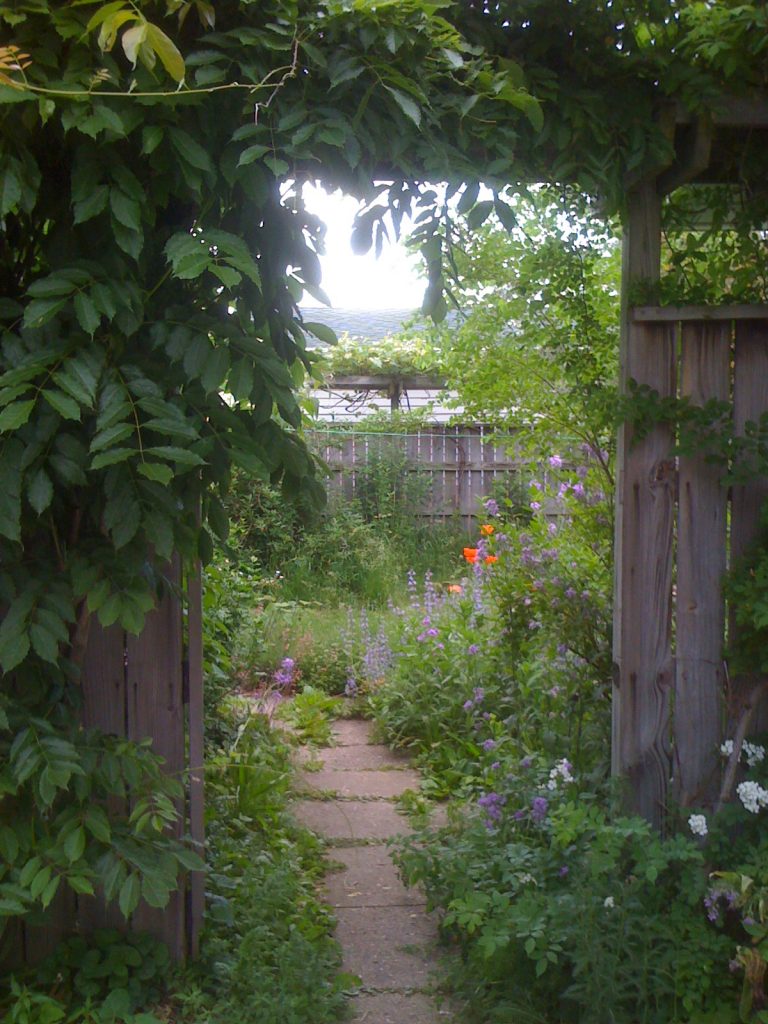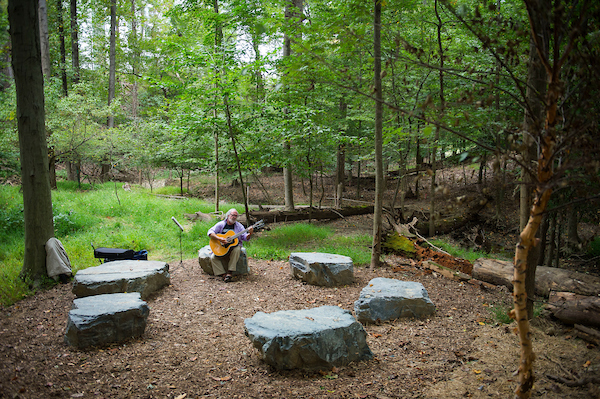The Secret Garden is a classic English children’s novel, published in 1911. It is a story of two children learning to love themselves and others, through the magic of a hidden English garden. The story reveals the human desire for exploration and possession of nature, but also our cycle of birth and rebirth. As the year comes to end, share what is precious and sacred with your friends and neighbors. Share your secret garden.

Civic Sacred Spaces
People readily recognize the importance of positive relationships with friends and loved ones. Relationships with places are also important aspects of a person’s wellness and expressions; more than a backdrop. Social activity and personal transformation in a green space contributes to what Nature Sacred describes as civic sacred.
Everyday encounters with nature in cities have the potential to promote inspiration, deeper thinking, mindfulness, and social and cultural connections, and may be transformational. A civic sacred green space emerges from engagement and interaction with the land, one’s body, mind and spirt, and other people.
Among garden designers, shared “patterns” guide decision of where to place entrances, fountains, clearings and vegetation. A sense of wonder for what is just around the corner entices the visitor to wander along a path. A sense of enclosed space, perhaps circling a small water fountain, creates intimacy and safety. Lush, green plants and surprising bursts of spring color are the hallmark of secret gardens. Civic sacred spaces can take the form of community gardens enabling all to engage with, personalize, and experience their home community in deeply meaningful ways.

“Sometimes since I’ve been in the garden I’ve looked up through the trees at the sky and I have had a strange feeling of being happy as if something was pushing and drawing in my chest and making me breathe fast. Magic is always pushing and drawing and making things out of nothing. Everything is made out of magic, leaves and trees, flowers and birds, badgers and foxes and squirrels and people. So it must be all around us. In this garden – in all the places.”-Burnett, The Secret Garden
Renew and Connect
Urban planning and design is beginning to catch up with the human desire for renewal in the garden. A recent commercial proclamation of 2016 “Color of the Year” in The New York Times praises a fresh spring green, and what it represents in the wake of the world. For the Times and Pantone, it represents “the color of hopefulness, and of our connection to nature. It speaks to what we call the ‘re’ words: regenerate, refresh, revitalize, renew. Every spring we enter a new cycle and new shoots come from the ground. It is something life affirming to look forward to.”
The Times article addresses head-on the United States of stress, and whether renewal represents a communal yearning. Humans need small, public green spaces that provide sanctuary and a moment for breath. Recent sharing of online maps of hidden greenspaces hint at this growing recognition of our need to share public green space.

“At first people refuse to believe that a strange new thing can be done, then they begin to hope it can be done, then they see it can be done–then it is done and all the world wonders why it was not done centuries ago.”-Burnett, The Secret Garden
